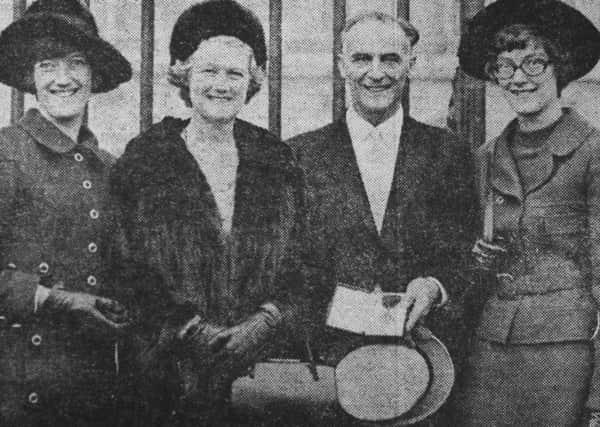BYGONE DAYS: Particulars of the ‘Big Wind’ of 1839 reported by the News Letter


The paper added: “In many parts of the town the houses rocked as if shaken by an earthquake, to such an alarming degree as to compel inmates to abandon them and seek shelter in places of greater security.”
Then in the News Letter of January 11, 1839, more details of the storm from across the province were reported.
Advertisement
Advertisement
A correspondent from Draperstown wrote: “The destruction caused by the storm was frightful.
“The ridges of three of the best houses in the village were entirely blown down, and even the elegant market house lately erected by the Drapers’ Company was considerably injured. Scarcely a house escaped, and numerous stacks of hay and oats were entirely carried away. Happily no lives were lost, but the Parish Church is a scene of desolation – the spires levelled to the ground, the walls are uncovered, and the whole edifice is nearly a mass of ruins.”
From Islandmagee the following reported was received: “Here the devastation has been almost universal, scarcely a house having escaped, while numerous stacks of grain have been carried away into the sea. In Larne lough five coasting vessels have been either sunk or wrecked. A subscription has been set on foot for the relief of the poor sufferers in Islandmagee, whose case is truly deplorable.”
At Ballymena it was reported: “Amongst the other casualties here the chimney of Messrs Davison’s flax mill has been blown down, breaking through their gas works in its fall.”
Average yield of flax per statute acre could be ‘raised’
Advertisement
Advertisement
The Northern Ireland Development Committee, on which flax growers, scutchers and spinners were all represented, issued a statement during this week in 1957 that it is not responsible tor the arrangements of a guaranteed market and price for flax.
“These are negotiated directly between the Ulster Farmers’ Union, the Flax Spinners’ Association Ltd and the government,” the statement said.
“The committee is, however, concerned that the question price per stone fibre should be kept in its proper perspective and that farmers’ disappointment with the government decision should not obscure the fact that flax has an important place in Ulster farming and that its earning capacity crop is capable of an increase.”
The committee was of the opinion that the average yield of flax per statute acre in Northern Ireland could be raised substantially and that if this was done the fall prices over the past year “will be more than made up in terms of cash per acre”.
Advertisement
Advertisement
The committee was, with the full support of all sections comprising its membership (farmers, scutchers and spinners), engaged at that time in “a vigorous programme” designed to help growers make money from flax and to supply the Northern Ireland linen trade with a steady supply of fibre of acceptable quality.
It was noted by the committee that any further fall in “the already low acreage under flax” in Ulster would add to the difficulties of their task and it was “hoped and expected” that farmers having experience of the wide range of reliable, yielding flax seeds were then available which will continue to grow flax and to obtain an economic return for their work.